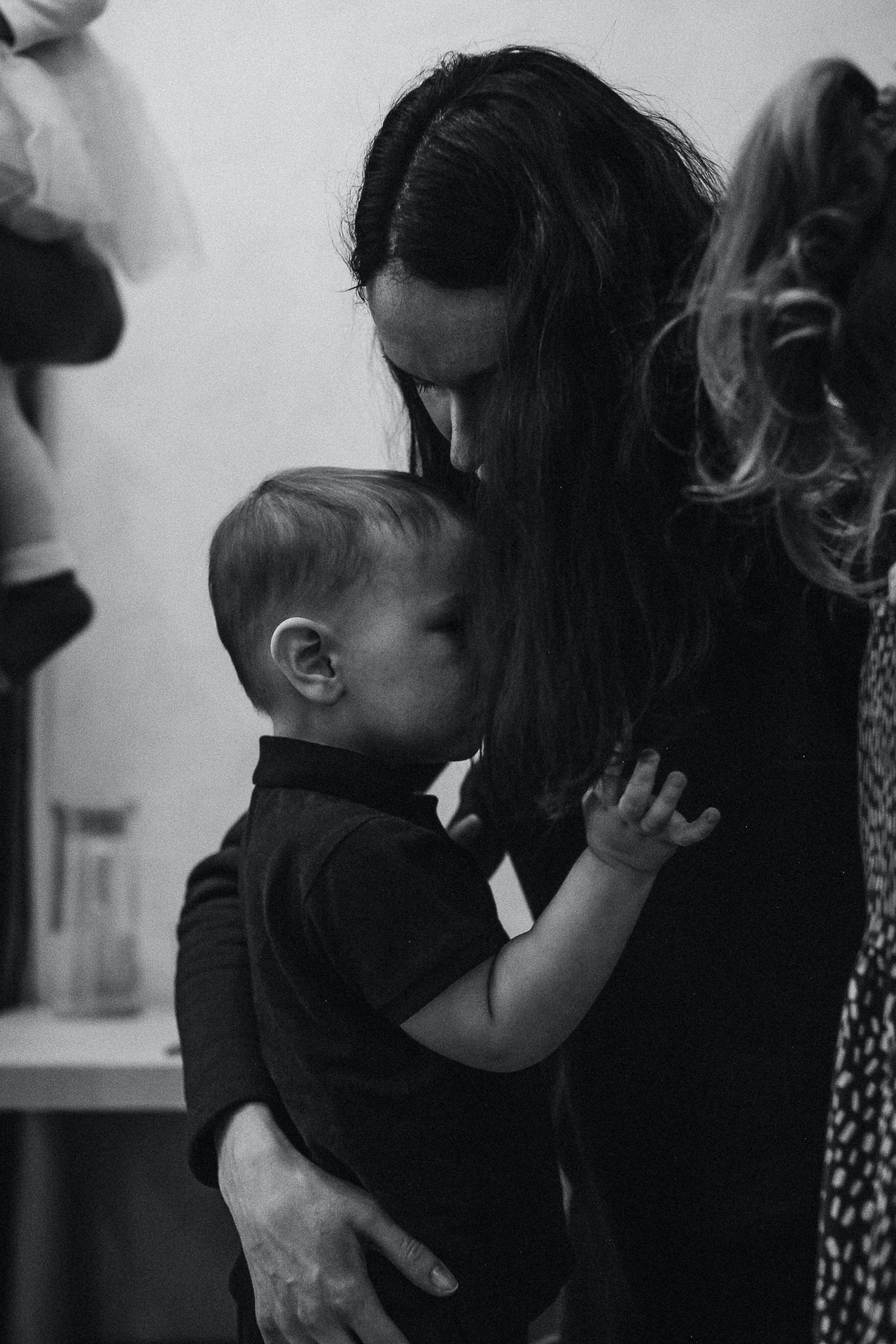Our children, just like us, have feelings and emotions.
However, they often need guidance on processing, moving through, and releasing big feelings and emotions. I believe in feeling into emotions, feeling into what needs to be released from the body.
I encourage tantrums, as I believe tantrums happen when a child is dysregulated. It often scares them when big emotions are rising, as they haven’t learned how to self-regulate. In these moments, they quite often don’t feel safe.
When a child reaches seven or eight, their brain develops. They begin to learn more words. So, teaching kids these tools at an early age helps and supports them to develop the capabilities to be able to say, “Mummy, I’m sad; I need a hug,” or “I need to have a big cry,” or “Can you help me move these big emotions through my body?”
A new language starts to develop and creates deep emotional safety. So when a child becomes a teenager, the teenager feels empowered. They are also aware that the parent becomes the safest place to come to confide. In doing so, I also give parents permission to become who they want to be and ask for what they need to feel safe, which is often a new language for them.
Whether it’s helping kids adjust to the unknowns of life-changing events such as separation/divorce, world pandemics, homeschooling, or learning to deal with day-to-day life challenges, teaching our kids how to safely process, move through, and release emotions is invaluable in their tool kits as they grow and evolve.
There are many ways we can do this:
1. Be there.
When a child is experiencing a big emotional release, the best thing we can do is allow that release to happen by staying close to them, even if that means just sitting at the door. Big releases can be a lot for us and them and result in aggression. For example, if our child hits or punches, say, “I will not let you hit me; that is a boundary, but I am here for you. I can handle your big emotions.” We can hand them a pillow or a punching bag to use. Giving them the tools creates a place of safety.
2. Find your joy.
Find the joy in what lights your child up. For us, it was singing and dancing. We would belt tunes so loud that the neighbours thought we were having a dance party. We would smile, laugh, and forget about everything. In those moments, it was just him and me. To this day, we use music to cheer us up.
3. Breathwork.
When tempers begin to flare, breathing exercises are one of the most effective calming strategies for kids who are dealing with difficult emotions. There is a lot of power in a deep, cleansing breath.
If big releases occur, I encourage you to let them happen first. When your child is calm and self-regulated, then introduce breathing practices. I encourage you to make these playful.
Different practices relate to emotions. For example, I use Lion’s breath when Axel feels angry. He then learns to connect the two.
I have created a Kids Wellness and Mental Health Platform called Happy Souls Kids to share the breath practices we use. These practices you can do together, in a group, or on your own.
4. Art Therapy.
Art provides children with a way to communicate thoughts or feelings that may seem too dangerous or complex to spell out with words. So I highly encourage using art to express emotions. Allow your child to pick colours that resonate with them. Invite them to draw what they are feeling. Allow them to tap into their body and feel. The artistic creation can encourage a deep discussion. Ask your child why they used those particular colours and what they can see. Be curious.
5. Get out in nature.
The first thing I do with Axel if he has a moment is to get him out in nature—the beach, a park, a garden—wherever I can to ground him. Axel has become accustomed to my ways, so he is often reluctant when I suggest this and states, “I hate the beach.”
Every single time in the post-beach experience, he walks away happy. So we discuss that. “How did you feel after school?” “Angry, mummy.” “How do you feel now?” “Happy.” We relate feelings to experiences, so he learns. “So, how does the beach make you feel?” “It makes me happy.” This, therefore, teaches him subconsciously when he is older to go for a walk or go to the beach when he is having a moment.
6. Yoga.
Yoga is a practice that creates stillness to calm a child’s mind. When doing yoga, children exercise, play, connect more deeply with the inner self, and develop an intimate relationship with the natural world that surrounds them. Yoga brings that marvellous inner light that all children have to the surface.
7. Meditation.
A regular meditation practice can help kids read and respond to internal signals of stress before their developing brains and bodies give in to a full-blown tantrum. The key is intuiting what your child needs to come back into balance and giving them the tools to practice.
In practice, I teach children and parents the strategies for dealing with big emotions and feelings in a healthy, fun way. I invite them to model empathy so children can unapologetically be themselves. I encourage the power of listening—the power of presence. When someone feels a presence, they feel seen and heard, and to be seen and heard in this world is essentially what we crave.
~


 Share on bsky
Share on bsky





Read 6 comments and reply